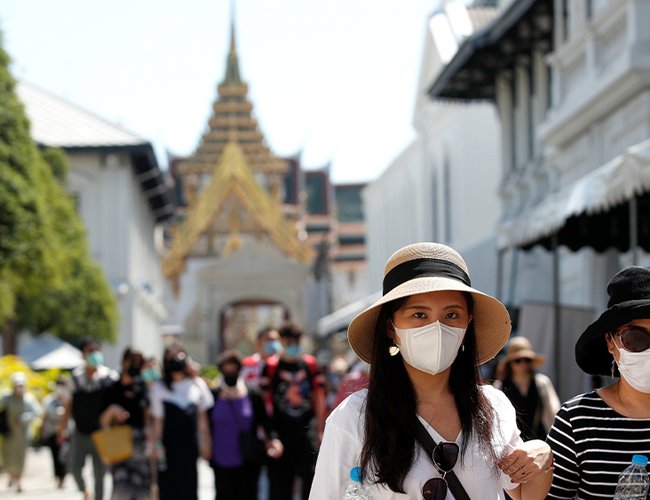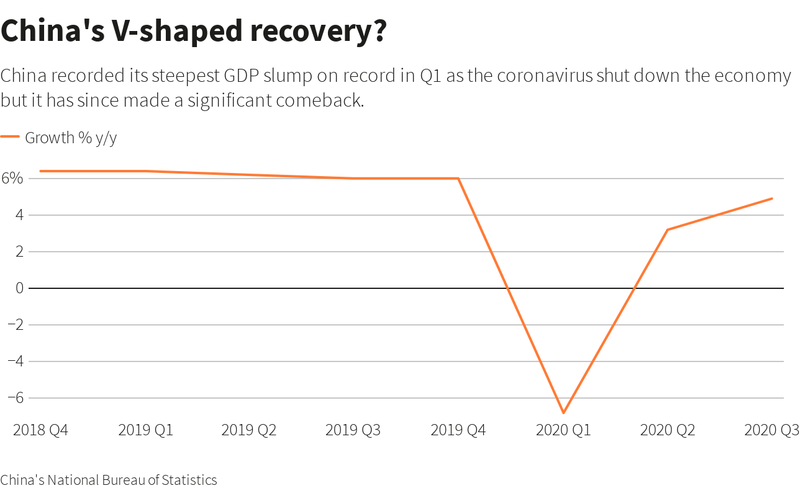
Just when the COVID-19 pandemic had started to gain a foothold back in April, I had written an opinion piece in one of the dailies stating how the world would change post the pandemic with China emerging as the new superpower. I had every reason to believe so. China had already begun to control the rise in infection while in the US, where the number of infected was below 30,000, a swift rise was being observed. Then, in the run-up to the American Presidential elections, where both the Presidential candidates were busy bashing Beijing, very few seem to have noticed that the latter had already raced ahead.
Seven months after I wrote the op-ed, I have stronger reasons to believe in my argument. According to government data released last month, the Chinese economy grew 4.9% between July and September becoming the first major economy to recover from the Covid-19 pandemic. The growth is remarkable considering the fact that for the first three months of this year, the Asian giant’s economy shrank by 6.8%. It was the first time China’s economy had contracted since it started recording quarterly figures back in 1992.
This is not to say that the Chinese economy is back to where it was before the pandemic. But it is a position where many other big economies will take months to reach. Speaking at an event last month, China’s top economist and a cabinet advisor Justin Lin Yifu said that no matter how the international situation changes, China's GDP still has the potential to grow by 8 percent a year by 2030. He further added that even if affected by Covid-19, China's GDP growth rate this year may be between 2 and 3 percent while he predicted that ‘the world's growth may be minus 5 percentage points, the US growth may be minus 8 percentage points, and Europe's growth may be minus 10 percentage points’.
While 8 percent might sound a little too ambitious for many, there is no doubt that the Chinese will be leaving rest of the world far behind when the impact of the pandemic subsides. Until now, China’s growth had come about mostly from accelerating industrial production and robust export growth. The production and subsequent export of consumer electronics, personal protection equipment and other goods that were in high demand during the pandemic turned out to be a boon for the economy. Further, to increase growth, the government also rolled out a raft of measures including more fiscal spending, tax relief and cuts in lending rates and banks’ reserve requirements to revive the economy and support employment. Add to that, domestic consumption and spending which was still lower until August has picked up since October; a time when millions of Chinese travel and spend during their national holidays.

Policymakers across the glove are now pinning their hopes on a robust recovery in China to help restart demand as many economies struggle especially with the second wave of coronavirus infections emerging. However, it is too early to expect China to become the savior. Its imports are still low. More importantly, although its measures to control the Covid infections have been largely successful, there are still areas in major cities which have been recording local transmissions. Until last few, Chinese authorities were testing millions of people, imposing lockdowns and shutting down schools after multiple locally transmitted coronavirus cases were discovered in Tianjin, Shanghai and Manzhouli. Controlling the pandemic, thus, still remains one of the top priorities for authorities along with reviving the economy.
One thing, however, is for sure. Since China will have raced ahead when the other big economies start reviving, its bargaining power will have increased exponentially. In such a situation, many big economies will start to cozy up to the Asian giant for their own gain. For the new American President, it might just be one of the many tough decisions he will have to make in the years to come – continue the trade war or cozy up to the Chinese?
Sharma is a political analyst with a Political Science degree from Delhi University and an International Law degree from ECUPL, Shanghai.
- Ukrainian Crisis And The World (Dis)Order
- Apr 22, 2022
- China’s Cautious Steps In The Graveyard Of Empires
- Aug 18, 2021
- Foreign Aid On The Fence!
- Aug 08, 2021
- Communist Party of China centenary celebrations Reading between the lips
- Jul 14, 2021
- Second Wave Of Covid-19 In India: Deadly Blow To The Economy
- Jun 23, 2021













